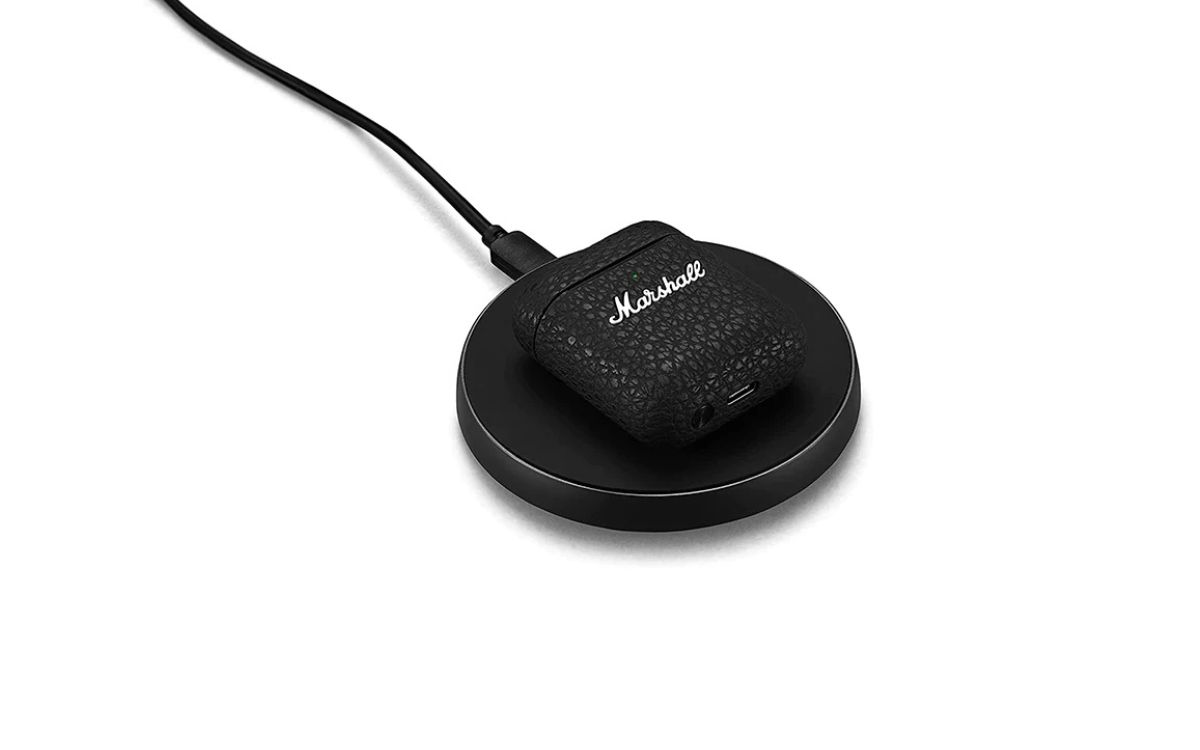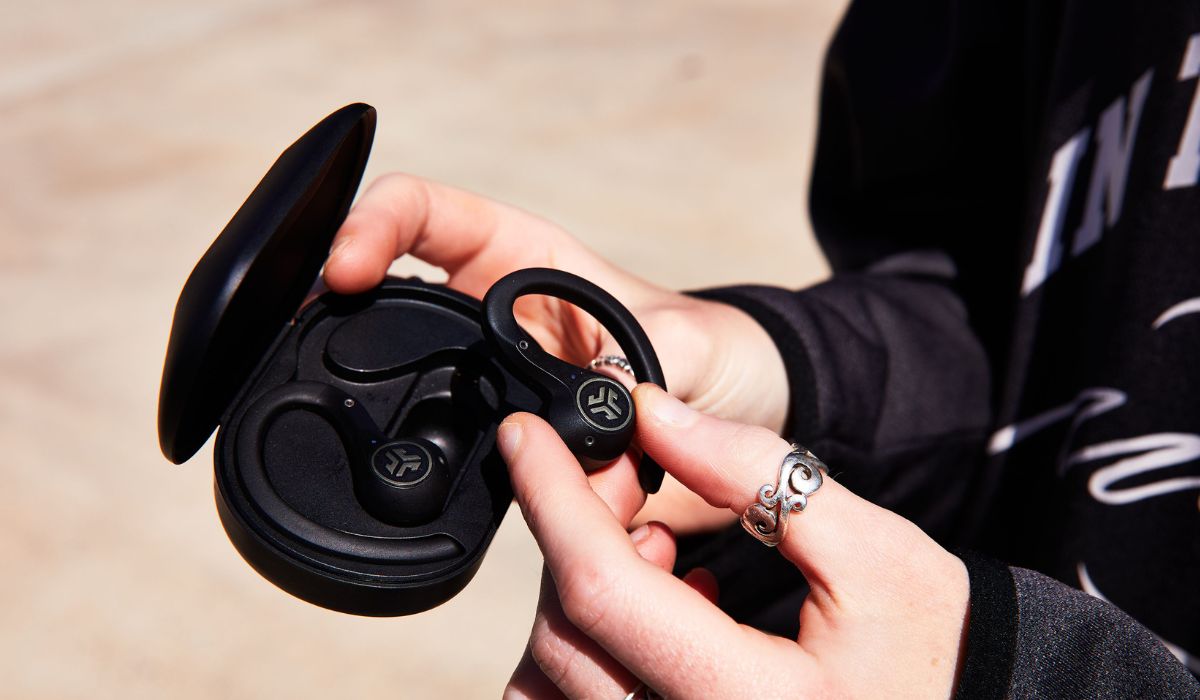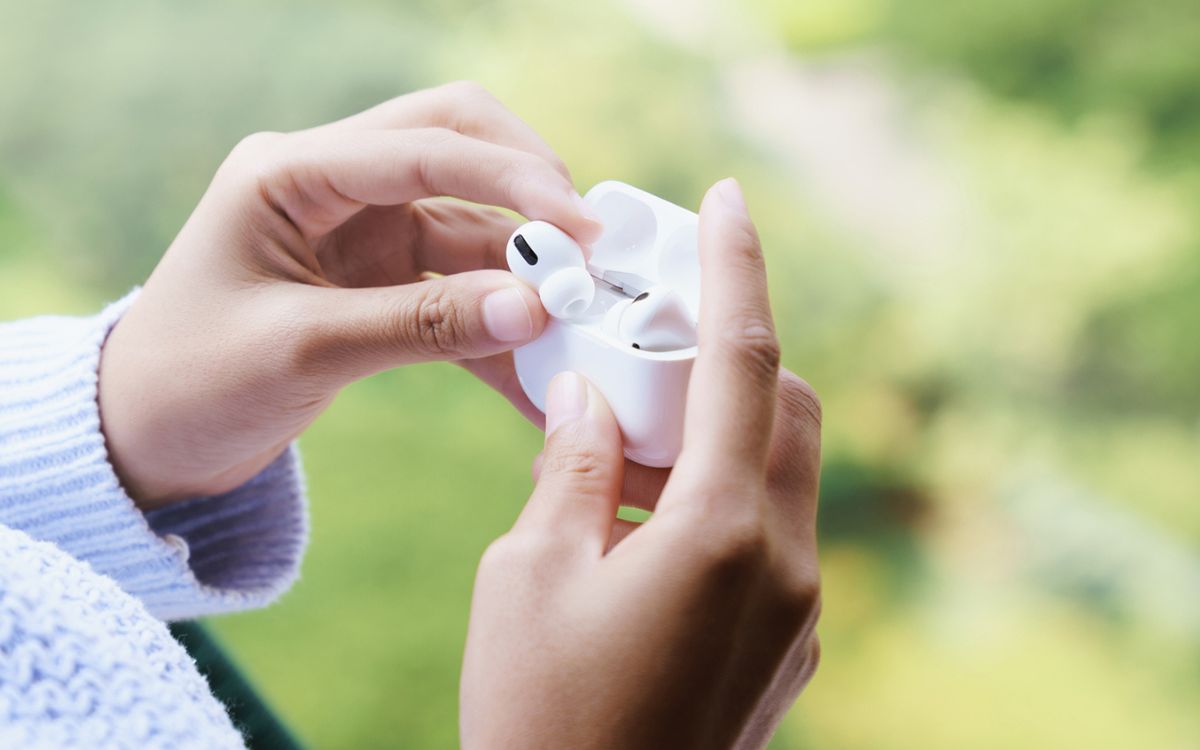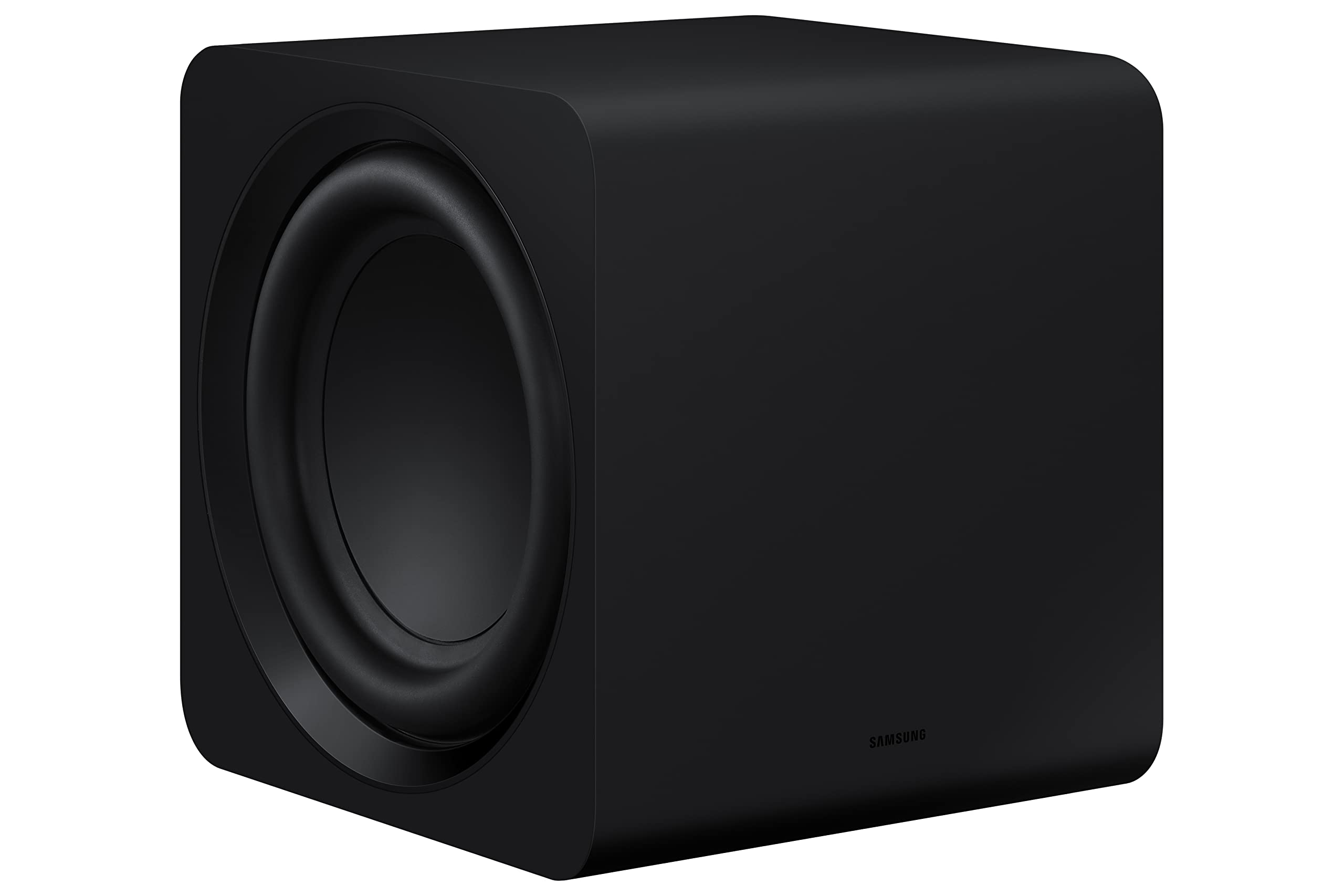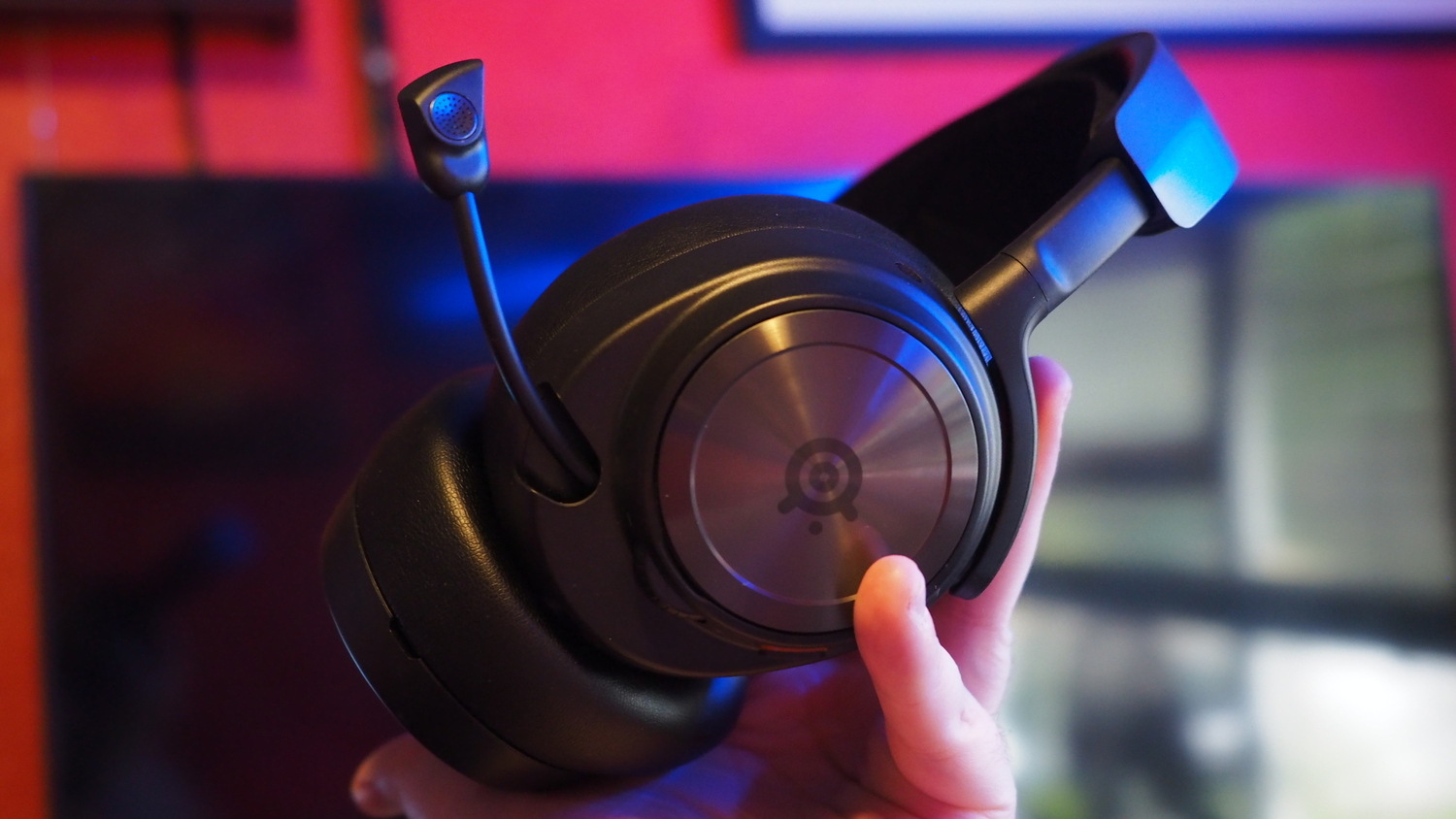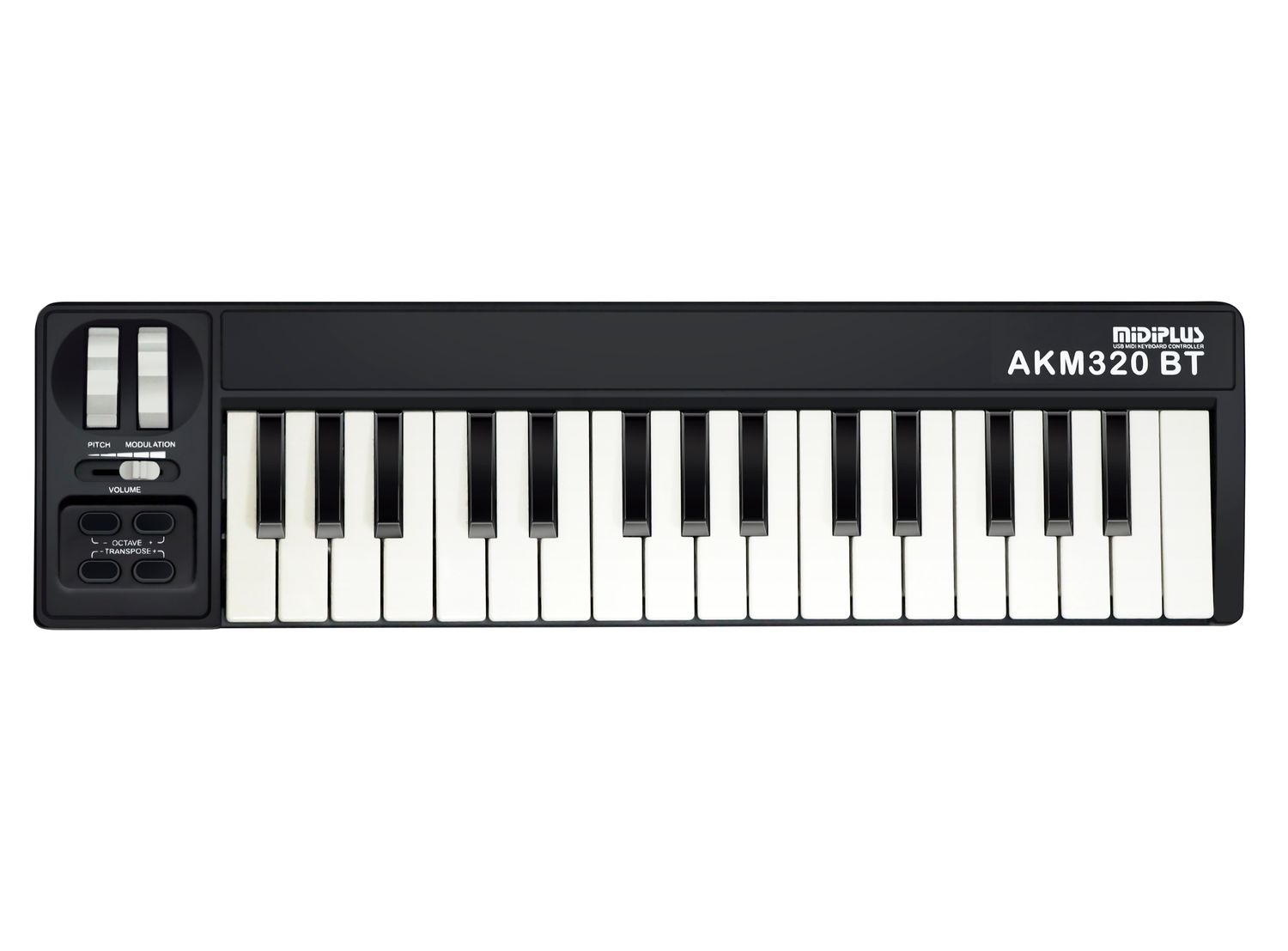Home>Devices & Equipment>Earbuds>Why Do My Earbuds Not Work


Earbuds
Why Do My Earbuds Not Work
Modified: January 22, 2024
Discover the reasons why your earbuds may not be working properly. Find troubleshooting tips and solutions for common issues with earbuds.
(Many of the links in this article redirect to a specific reviewed product. Your purchase of these products through affiliate links helps to generate commission for AudioLover.com, at no extra cost. Learn more)
Table of Contents
Introduction
Earbuds have become an essential accessory for many people in today’s technology-driven world. Whether you use them for listening to music, watching videos, or making hands-free calls, the convenience and portability they offer are unmatched. However, it can be frustrating when your earbuds suddenly stop working, leaving you without your favorite tunes or unable to communicate effectively.
In this article, we will explore common issues that can cause earbud malfunctions and provide troubleshooting techniques to help you get your earbuds back to working condition. So, if you’ve ever wondered why your earbuds sometimes fail to deliver the crystal-clear sound you desire, read on to discover the potential solutions.
Before we delve into the specific problems and solutions, it’s important to note that not all earbuds are created equal. Different brands and models may have varying design features and functionalities, which can sometimes result in specific issues. However, most earbuds share common underlying causes for malfunctioning.
Whether you own Apple AirPods, Samsung Galaxy Buds, or any other popular earbuds on the market, the information provided in this article will be applicable to a wide range of devices. Let’s now explore some of the common problems that earbud users encounter and uncover the reasons behind them.
Common Earbud Issues
Earbuds may encounter a variety of issues that can affect their performance. Understanding these common problems can help you troubleshoot and resolve the issues you may face. Here are some of the most prevalent earbud issues:
- No sound: One of the most frustrating problems is when your earbuds produce no sound at all. This can be caused by a range of factors, such as loose connections, volume settings, or software glitches.
- Low volume: Sometimes, the volume of your earbuds may be significantly lower than expected. This can be attributed to device settings, software issues, or physical obstructions that block the sound.
- Poor sound quality: If your earbuds produce distorted or low-quality sound, it can greatly diminish your audio experience. Common causes include damaged drivers, audio jack problems, or issues with the audio source.
- Intermittent or inconsistent sound: Do you experience sound cutting in and out while using your earbuds? This problem may be caused by loose connections, faulty wiring, or even interference from nearby electronic devices.
- One earbud not working: It’s a common frustration when one of your earbuds stops functioning properly. This issue can occur due to damaged wirings, water damage, or even manufacturing defects.
- Uncomfortable fit: Earbuds come in various shapes and sizes, and finding the right fit for your ears can be challenging. If your earbuds constantly slip out or cause discomfort, it can greatly affect your overall listening experience.
These are just a few examples of the issues you may encounter with your earbuds. Fortunately, many of these problems can be resolved with a few simple troubleshooting steps. In the following sections, we will explore some of the common causes behind these issues and provide solutions to help you get your earbuds back in working order.
Loose or Damaged Connections
One of the most common reasons why earbuds may not work properly is due to loose or damaged connections. This can occur at various points along the earbud’s wiring, including the audio jack, the connection between the earbuds, or even within the earbud housing itself.
To determine if loose or damaged connections are the cause of your earbud issues, try the following steps:
- Check the audio jack: Ensure that the audio jack is securely inserted into the device’s headphone jack. Sometimes, the connection can become loose with frequent use, resulting in intermittent sound or no sound at all. Try gently wiggling the audio jack while it’s inserted to see if the sound cuts in and out.
- Inspect the earbud cables: Examine the cables and wiring for any signs of damage, such as fraying or exposed wires. If you notice any issues, it’s likely that the damaged portion is causing connectivity issues. In such cases, you may need to replace the earbuds or have them repaired.
- Ensure a proper connection between earbuds: If you’re using earbuds with a separate left and right earpiece, make sure they are properly connected. Check for any loose or detached connectors between the wires leading to each earbud. If there are any problems, reattach or tighten the connection as necessary.
If you find that the connections are loose, you may be able to resolve the issue by repositioning or securing the connections. However, if the wires have been damaged, it is recommended to seek professional help or replace the earbuds to ensure optimal functionality.
In some cases, using wireless earbuds can eliminate issues related to loose or damaged connections. Wireless earbuds rely on a Bluetooth connection to your device, eliminating the need for physical connections and reducing the likelihood of connection-related problems.
Remember, addressing loose or damaged connections can often resolve earbud issues, but if the problem persists, there may be other underlying causes to investigate. In the next section, we will explore volume and sound quality issues and provide potential solutions.
Volume or Sound Quality Issues
Volume and sound quality problems can greatly detract from your listening experience. If you’re experiencing issues with low volume or poor sound quality with your earbuds, there are a few potential causes to consider:
- Device volume settings: Double-check that the volume on your device is not set too low. Sometimes, the volume of your earbuds may be limited by the device’s volume settings. Increase the volume on your device and see if it resolves the issue.
- Audio source quality: If you notice a decline in sound quality, it’s worth considering the quality of the audio source. Low-quality audio files or streaming services may result in subpar sound. Try playing high-quality audio files or using reputable streaming platforms to ensure optimal sound reproduction.
- Equalizer settings: Many devices feature equalizer settings that allow you to adjust the audio frequency response. Experiment with different presets or manually adjust the equalizer settings to enhance the volume and sound quality of your earbuds.
- Audio app settings: Certain audio apps may have their own settings that impact volume and sound quality. Check the settings within the app you’re using to see if there are any adjustments you can make to improve your earbud’s performance.
- Driver damage: The drivers inside the earbuds are responsible for producing sound. If the drivers are damaged or worn out, it can result in low volume or poor sound quality. Unfortunately, if this is the case, repairing or replacing the earbuds may be necessary.
By considering these factors and making the necessary adjustments to settings or audio sources, you can often address volume and sound quality issues with your earbuds. If the problem persists, there may be other factors contributing to the problem, such as compatibility issues or software glitches, which we will explore in the next sections.
Remember, troubleshooting steps may vary depending on the make and model of your earbuds. Consult the user manual or the manufacturer’s website for specific instructions tailored to your device.
Compatibility and Device Settings
When it comes to earbud issues, compatibility and device settings are often overlooked factors that can affect their performance. Here are a few considerations related to compatibility and device settings that may be causing problems:
- Compatibility with your device: Ensure that your earbuds are compatible with the device you are using. Some earbuds may have specific compatibility requirements and may not work correctly with certain devices. Check the manufacturer’s specifications or user manual to confirm compatibility.
- Bluetooth connectivity: If you’re using wireless earbuds, ensure that Bluetooth is properly enabled on your device. Additionally, make sure that your earbuds are properly paired with the device and connected. Sometimes, re-pairing the earbuds can resolve connection issues and improve performance.
- Device sound settings: Take a look at your device’s sound settings. Some devices have settings that allow you to adjust specific audio-related preferences, such as stereo balance, sound enhancements, or headphone audio output mode. Ensure that these settings are properly configured for optimal earbud performance.
- Notification and sound profiles: Certain devices have notification and sound profiles that can impact how audio is delivered to your earbuds. Check if your device has specific profiles or modes that are affecting the sound output. Adjusting these settings may help resolve issues with volume or sound quality.
- Software or firmware updates: Outdated software or firmware on your device can sometimes cause compatibility issues with your earbuds. Check for any available updates for your device and earbud software, and ensure you have the latest versions installed.
By reviewing compatibility requirements, checking device settings, and keeping software up to date, you can often resolve issues related to compatibility and device settings. However, if the problems persist, it may be worth exploring other potential causes, such as software or firmware glitches, or issues with the audio jack, which we will discuss in the following sections.
Remember, troubleshooting steps may vary depending on your device and earbud model. Consult the user manual or the manufacturer’s website for more specific instructions tailored to your specific earbuds and device.
Software or Firmware Updates
Keeping the software or firmware of your device and earbuds up to date is crucial for optimal performance and compatibility. Outdated software or firmware can sometimes cause issues with connectivity, sound quality, or other earbud functionalities. Here’s what you should know about software and firmware updates:
- Device updates: Check for any available software updates for your device. Manufacturers regularly release updates to address bugs, improve performance, and enhance compatibility. Keeping your device’s software updated can often resolve issues with your earbuds.
- Earbud updates: Some earbud models have their own firmware that can be updated. Check the manufacturer’s website or the app associated with your earbuds for any available firmware updates. These updates may address specific issues or enhance the overall performance of your earbuds.
- Updating instructions: Follow the instructions provided by the manufacturer to update your device or earbuds correctly. It may involve connecting your device to a computer, using a specific app, or following a step-by-step process. It’s important to read and follow the instructions carefully to avoid any potential issues during the update process.
- Resetting earbuds: If you’ve recently updated your device’s software or firmware and are still experiencing issues with your earbuds, try resetting them. This can help clear any lingering software or connectivity conflicts. Refer to the user manual or manufacturer’s instructions on how to perform a reset for your specific earbud model.
Regularly updating your device’s software and earbud firmware can often resolve issues related to compatibility, connectivity, and performance. It’s a simple yet effective step that can significantly improve your earbud experience. However, if the problems persist, continue troubleshooting or seek professional help, as there may be other underlying causes contributing to the issues.
Next, we will explore another potential cause of earbud problems – issues with the audio jack.
Note: Ensure that you are updating software and firmware from official sources. Be cautious of downloading updates from unofficial websites or sources, as they may pose security risks or potentially harm your device or earbuds.
Audio Jack Problems
The audio jack, also known as the headphone jack, is a common point of connection between your earbuds and your device. As such, it can sometimes be the source of problems that affect the functionality and performance of your earbuds. Here are some audio jack issues you may encounter:
- Loose or damaged audio jack: A loose or damaged audio jack can cause intermittent connection issues, resulting in distorted or no sound. If you notice that your earbuds only work when the audio jack is held at a specific angle, it suggests that the audio jack is loose or damaged.
- Dirt or debris in the audio jack: Over time, dirt, lint, or debris can accumulate in the audio jack, obstructing the connection between the jack and the earbuds. This can result in poor sound quality, intermittent sound, or no sound at all.
- Bent or broken audio jack pins: The pins inside the audio jack can become bent or broken, preventing the proper transmission of audio signals. If you’ve accidentally applied pressure or inserted the audio jack forcefully, it can lead to these issues.
- Incompatible audio jack: Certain devices may have audio jacks that are not fully compatible with your earbuds. This can result in poor sound quality, distorted audio, or compatibility issues. Ensure that your earbuds and device are fully compatible in terms of audio jack specifications.
To address audio jack problems with your earbuds, consider the following steps:
- Check for debris: Inspect the audio jack for any visible dirt, lint, or debris. Use a small, clean brush or compressed air to gently remove any obstructions. Be careful not to damage the audio jack while cleaning.
- Ensure a secure connection: Make sure the audio jack is fully inserted into the device’s headphone jack. Sometimes, a loose connection can cause sound issues. Push the audio jack firmly but gently into the jack to ensure a secure connection.
- Try a different audio jack: If you have multiple audio jacks available on your device, try using a different one to see if the problem persists. This can help determine if the issue lies with the audio jack or other factors.
- Seek professional assistance: If you’ve tried the above steps and are still experiencing audio jack problems, it may be necessary to seek professional assistance. Contact the manufacturer or a qualified technician to diagnose and repair the audio jack or explore other possible solutions.
Addressing audio jack problems can often resolve issues with your earbuds. However, if the problems persist, continue troubleshooting or consider seeking professional help to identify and resolve any underlying issues.
In the next section, we will provide troubleshooting techniques that can help resolve common earbud issues.
Troubleshooting Techniques
When it comes to troubleshooting earbud issues, there are several techniques you can try before seeking professional help or considering a replacement. These troubleshooting steps can help you identify and resolve common problems. Here are some techniques to consider:
- Restart your device: Sometimes, simply restarting your device can resolve minor connectivity or software glitches that may be affecting your earbuds. Power off your device, wait a few seconds, and then power it back on.
- Try different devices: If possible, test your earbuds on different devices to determine if the issue is specific to one device or widespread. This can help identify whether the problem lies with your earbuds or the device you’re using.
- Use different earbuds: Similarly, try using a different pair of earbuds or headphones with your device. This can help determine if the issue is isolated to your earbuds or if there’s a broader issue with the device’s audio output or settings.
- Reset earbuds: If your earbuds have a reset function, follow the manufacturer’s instructions to perform a reset. This can help clear any temporary settings or configurations that may be causing issues.
- Update audio drivers: For wired earbuds, ensure that the audio drivers on your device are up to date. Outdated or incompatible drivers can often lead to earbud connectivity or performance issues. Check the device manufacturer’s website for the latest audio driver updates.
- Check for software conflicts: If you’ve recently installed new software or applications on your device, it’s possible that they may be causing conflicts with your earbuds. Try temporarily disabling or uninstalling any recently added software to see if it resolves the issue.
- Factory reset your device: As a last resort, you can consider performing a factory reset on your device. This will erase all data and settings, returning your device to its original state. Remember to back up your important data before proceeding with a factory reset.
Remember to refer to the user manual or manufacturer’s instructions for device-specific troubleshooting steps. Additionally, keep in mind that some earbud problems may require professional assistance or device replacement if the issues persist despite your troubleshooting efforts.
In the next section, we will explore cleaning and maintenance tips to help keep your earbuds in optimal condition.
Cleaning and Maintenance Tips
Proper cleaning and maintenance of your earbuds can help prolong their lifespan and ensure optimal performance. Over time, dirt, wax, and debris can accumulate on the earbuds, affecting sound quality and overall functionality. Here are some cleaning and maintenance tips to keep your earbuds in top shape:
- Regularly clean the earbud housing: Use a soft, dry cloth or a q-tip to gently clean the exterior of the earbuds. Avoid using water or harsh cleaning agents, as they can damage the earbud components.
- Remove ear tips or pads for cleaning: If your earbuds have removable ear tips or pads, take them off and clean them separately. Follow the manufacturer’s instructions for proper cleaning techniques, which may involve using mild soap and water or specialized cleaning solutions.
- Clear earwax or debris: Earwax buildup is a common problem that can affect sound quality. Use a soft brush or a clean toothbrush to gently remove any earwax or debris from the mesh or vent openings of the earbuds. Be careful not to push the debris further into the earbud.
- Avoid excessive moisture: Moisture can damage the internal components of your earbuds. Remove your earbuds before engaging in activities that may expose them to excessive moisture, such as swimming or showering.
- Store your earbuds properly: When you’re not using your earbuds, store them in a clean and dry case or pouch. Avoid tossing them loosely into bags or pockets, as this can cause tangling or accidental damage.
- Handle the cables with care: Avoid bending or twisting the cables excessively, as it can lead to cable damage or connectivity issues. When winding the cables, use the over-under technique to prevent tangling and minimize stress on the cables.
- Replace ear tips or pads when necessary: Over time, ear tips or pads can wear out and lose their shape, affecting the fit and sound quality. Replace them with new ones as needed, following the manufacturer’s recommendations.
By following these cleaning and maintenance tips, you can keep your earbuds in good condition and ensure optimal performance. Regular cleaning and proper storage will help maintain the sound quality and overall functionality of your earbuds.
However, if you’ve tried troubleshooting techniques, cleaned your earbuds, and the issues persist, it may be time to seek professional help or consider replacing your earbuds.
In the next section, we will discuss when it’s appropriate to seek professional assistance for your earbud problems.
Seeking Professional Help
While many earbud issues can be resolved through troubleshooting and basic maintenance, there are cases where seeking professional help is necessary. If you have tried various troubleshooting techniques and the problems with your earbuds persist, it may be time to consider professional assistance. Here are some situations that warrant seeking professional help:
- Physical damage: If your earbuds have suffered physical damage, such as broken or frayed cables, damaged audio jacks, or severe water or impact damage, it is best to consult a professional technician. They can assess the extent of the damage and provide appropriate repair solutions.
- Manufacturing defects: If your earbuds are experiencing issues and are still under warranty, it is advisable to contact the manufacturer or authorized service center. They can determine if the problems are due to manufacturing defects and provide repair or replacement options.
- Internal hardware issues: If the problems with your earbuds are related to internal hardware components, such as the drivers or circuitry, it may require specialized knowledge and equipment to diagnose and repair. Professional technicians have the expertise to handle such issues effectively.
- Software or firmware glitches: If you have exhausted all software troubleshooting options and are still experiencing issues, a professional can help determine if it’s a software or firmware glitch that requires specialized attention. They may have access to specific diagnostic tools or firmware updates to resolve the problem.
- Compatibility issues: If you have confirmed that your earbuds are compatible with your device, but they still do not work properly, it may indicate a compatibility issue that requires expert advice. A professional technician can evaluate the compatibility of your earbuds and device and suggest potential solutions.
When seeking professional help, reach out to the manufacturer’s customer support team or authorized service centers for assistance. They can guide you through the process of repair or replacement, depending on the nature of the problem and the warranty coverage.
Remember, while it can be tempting to try DIY repairs, doing so without proper knowledge or tools may lead to further damage. It is generally best to leave complex repairs to professionals to ensure the integrity of your earbuds and your personal safety.
In the next section, we will conclude our article and summarize the key takeaways.
Conclusion
Earbuds have become an integral part of our daily lives, providing us with the convenience of portable audio and communication. However, encountering issues with our earbuds can be frustrating. Fortunately, many common earbud problems can be resolved through troubleshooting and basic maintenance.
In this article, we have explored various earbud issues, including loose or damaged connections, volume or sound quality problems, compatibility and device settings, software or firmware update considerations, audio jack problems, and more. We have provided troubleshooting techniques and cleaning tips to help you address these issues.
It is essential to prioritize basic troubleshooting steps, such as checking connections, adjusting device settings, and ensuring software updates are up to date. Additionally, regular cleaning and proper maintenance can prolong the lifespan and optimize the performance of your earbuds.
However, in some cases, seeking professional help may be necessary, especially when dealing with physical damage, manufacturing defects, internal hardware issues, software or firmware glitches, or compatibility problems. Professional technicians have the expertise and tools to diagnose and resolve complex earbud problems effectively.
Remember, troubleshooting steps and solutions may vary depending on your specific earbud brand and model. It is advisable to consult the user manual or the manufacturer’s website for device-specific instructions.
By following the guidelines outlined in this article and using troubleshooting techniques, regular maintenance, and seeking professional assistance when needed, you can overcome most earbud issues and continue to enjoy your audio experience to the fullest.
Thank you for taking the time to read this comprehensive guide. We hope it has been helpful in solving your earbud problems. Keep rocking to your favorite tunes with your fully-functional earbuds!


